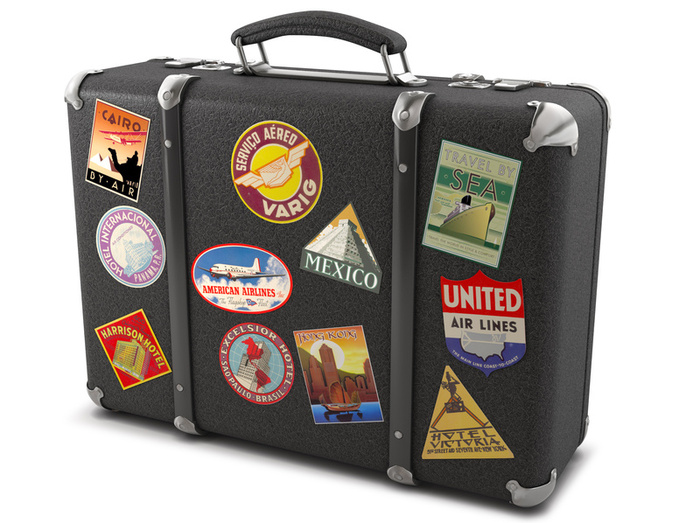Iceland is one of the most spectakular natural sites on the planet. It is a land of massive white glaciers and black sands, blue hot springs, raw lava fields, and green valleys. This North Atlantic island offers insight into the wild power of nature.
The Blue Lagoon
The Blue Lagoon is Iceland’s famous geothermal spa and one of the country’s most beautiful. Set in a desolate lava wilderness, the lagoon’s bright blue waters add a surreal splash of colour. You can laze in the steaming waters, have a beauty treatment, enjoy an excellent meal or stay nearby and catch the seasonal aurora display. If you have your own transport, consider a detour to see some unusual sights; Grindavik’s Saltfish Museum, the Seltun hot springs and Selatangar’s abandoned fishing camp.
Vatnajokull National Park
Vatnajökull National Park is one of three national parks in Iceland and covers 12,000 sq. km (10% of Iceland’s surface) and comprises the Vatnajokull icecap and disconnected areas around its fringes. The long canyons and enormous waterfalls at Jokulsargljufur, Skaftafell’s high moorland and paired glaciers, Lonsoraefi’s wilderness and remains of Lakagigar’s catastrophic volcanic event can keep you occupied for days. Hiking, ice-climbing, skidooing and even dog-sledding are among the activities possible within this huge park.
Gullfoss
is also known as the Golden Falls and is unique because of the deep abyss it falls into and the sharp left it makes as it falls. One of the largest waterfalls it is also one of the most visited in the country. The powerful, two-tier waterfalls at Gullfoss on the Hvita present a stunning sight, whether part-frozen in winter, in full flood during the spring melt, or roaring away during the long summer. Take care at Gullfoss as paths are slippery and there are no safety railings or warning signs.
Geysir Hot Springs
The Geysir Hot Springs area located on the lower slopes of Bjarnarfell, 90 minutes northeast of Reykjavik, and comprises a dozen or more hot water blowholes, including Geysir, the spout that gave its name to other geysers worldwide. The area became active about 1,000 years ago and today the most impressive spout is Strokkur, which you will definitely see in action. Geysir’s pool is far larger but count yourself lucky if you see more than bubbles. Visit Haukadalur for an interesting old church and some undemanding hiking.
Lake Myvatn Area
Known as Midge Lake in English, its a peaceful spread of water east of Akureyi, The surrounding landscape, with a spectacular mix of extinct cinder cones and twisted lava formations, hot bathing pools, boiling mud pits and screaming volcanic vents. North-shore Reykjahlio is Myvatn’s main settlement, where you can organize tours to local sights and also to Askja Caldera in the barren interior. Enjoy an amazing journey through this area of extreme contrasts with great birdlife and flora, geothermal activity, geology and many places which feature in the Icelandic Sagas. The Lake Myvatn area is considered by many to be the most dramatic and also the most beautiful place in Iceland.
Snaefellsjokull National Park
Snæfellsjökull National Park is situated on the Snæfellsness peninsula. The park was established on June 28, 2001 and its proximity to Reykjavik (approx. 2 hours drive) makes it one of the most visited parks in Iceland. Considered by many to be the jewel of West Iceland, Snaefellsjokull is the most famous volcano in Iceland. Within its boundaries are highly interesting geological phenomena and historical sites.
Jokulsarlon
Jokulsarlon is a broad lagoon on the southeastern coast, where the nose of the Breioamerkurjokull glacier edges down to the sea. The lagoon formed after the glacier began receding during the 1940s and today presents a striking scene, filled by a mass of icebergs freshly broken off the glacier. With a deep, black-sand beach behind you and the white mass of Europe’s largest icecap, Vatnajokull, on the horizon, Jokulsarlon is a great spot to stretch your legs on the long drive from Vik to Hofn.
Latrabjarg Bird Cliffs
The Latrabjarg Bird Cliffs are just about as remote a place as you can readily reach in Iceland. Traditionally a farming area, the region has become almost depopulated since the 1960s, leaving Latrabjarg to the millions of seabirds that return here to breed during the summer months. Most people come here to see the abundant numbers of charismatic puffins. On the way there is also a worthwhile folk museum and an amazing beach at Breioavik, probably the last thing you would expect to find in this part of the world.
Landmannalaugar
Landmannalaugar, meaning “Countryman’s Bathing Pool,” is a lush hot springs area in southern Iceland surrounded by a stark wilderness of snow streaked mountains, ancient lava fields and flat glacial river valleys. Much of the countryside here has been shaped by Hekla, the country’s second most active volcano. Excellent camping facilities make it a great spot from which to appreciate the rugged interior. It is connected by summer-only buses from Reykjavik. You can also hike here along the exceptional Laugavegur trail.
Pingvellir (Thingvellir) National Park
Þingvellir (Thingvellir) is the National Park where the Althing, an open-air assembly representing the whole of Iceland is generally considered to be one of the “weather paradises” of Iceland. This is due to the fact that when the weather is good it is usually best in this area. The Althing has deep historical and symbolic associations for the people of Iceland. The property includes the Þingvellir National Park and the remains of the Althing itself: fragments of around 50 booths built from turf and stone. Remains from the 10th century are thought to be buried underground. The site also includes remains of agricultural use from the 18th and 19th centuries. The park shows evidence of the way the landscape was husbanded over 1,000 years.

